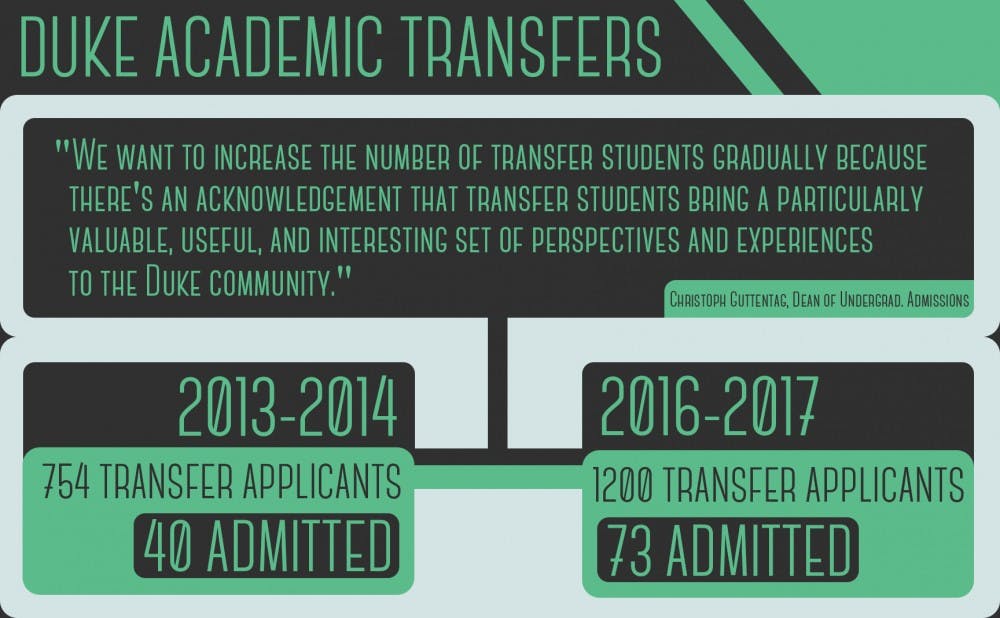Duke administrators are seeking to increase awareness of the transfer program as they expand the University’s small transfer student population.
Catering primarily to a four-year undergraduate experience, Duke has traditionally accepted a limited number of transfer students. With a set amount of on-campus housing available, the University has avoided increasing its undergraduate student enrollment.
However, recently, the number of transfer applicants and students accepted has risen—although there were 754 transfer applicants and 40 admitted transfer students during the 2013-2014 academic year, there were more than 1,200 applicants and 73 admitted students this past year.
“We want to increase the number of transfer students gradually because there’s an acknowledgement that transfer students bring a particularly valuable, useful and interesting set of perspectives and experiences to the Duke community,” said Christoph Guttentag, dean of undergraduate admissions.
Transfer students coming from technical institutions and Ivy League universities add another element of diversity to Duke’s student body, Guttentag added.
As a result, although the National Association for College Admissions Counseling—of which Duke is a member—prevents active recruitment of students enrolled at other colleges, University administrators have been trying to increase awareness of Duke’s transfer program.
“We feel comfortable talking about the transfer program both in our presentations at Duke and around the country,” Guttentag said. “We want to ensure that students and counselors are aware that transferring to Duke is a possibility."
He added that electronic and social media recruitment in the coming years will help admissions administrators achieve their goals of gradually increasing transfer student enrollment. First-year admissions will not be affected by the increase in transfer students, he noted.
The application process for transfer students is similar to the first-year student application. The transfer program uses the Common Application and requires both a high school and college transcript. Students also answer questions about their interest in transferring.
Guttentag explained that transfer applications are often uniquely interesting because the reasoning behind a student's decision to transfer can show that the university experience is often different from a student’s initial expectations.
“Overall, we see two major reasons: some students apply simply to leave the school they are currently enrolled in, while others have a specific aspiration to attend Duke,” he said.
Once the transfer students are notified of their acceptance, members of the University community often share their experiences and thoughts on why the students should attend Duke. In the past, administrators have also worked to improve transfer students’ initial experiences at the University.
“There was an interesting meeting between the dean of Trinity College and some transfer students a number of years ago expressing the need for a better transition,” Guttentag said, explaining that there was a desire for an orientation—not into college, but into Duke’s community specifically.
The Transfer Advisory Counselor program was thus put in place to help students adjust to life at Duke. The program, which provides all incoming students with an upperclassman peer mentor, is similar to the First-Year Advisory Counselor Program that all first-year students experience during their first year at Duke.
Get The Chronicle straight to your inbox
Signup for our weekly newsletter. Cancel at any time.

